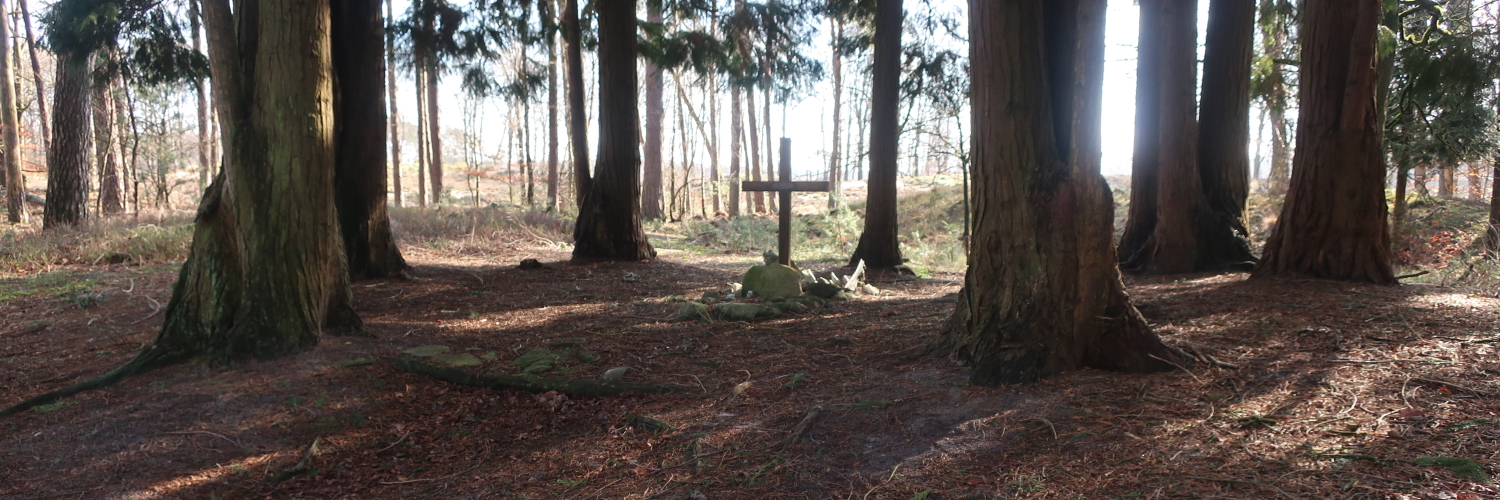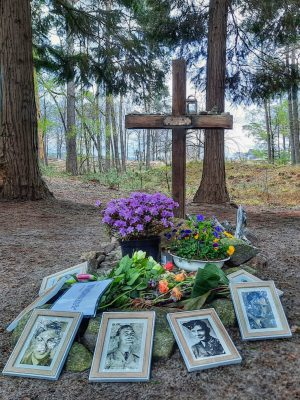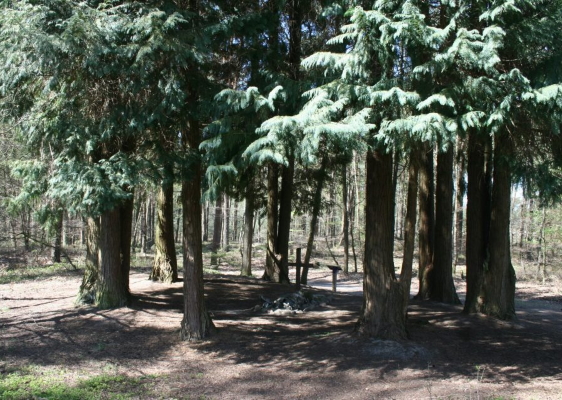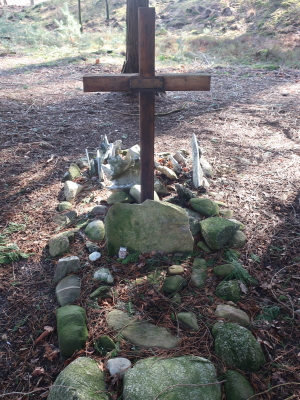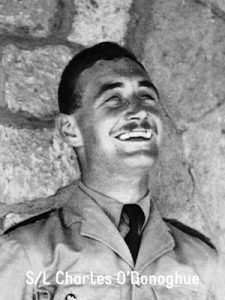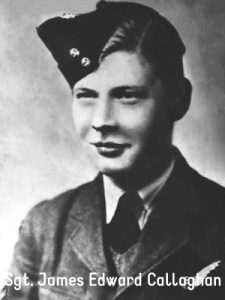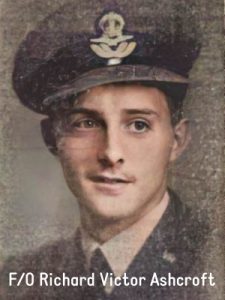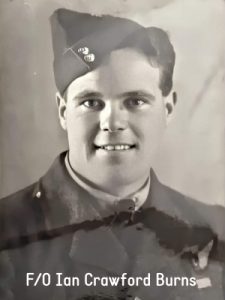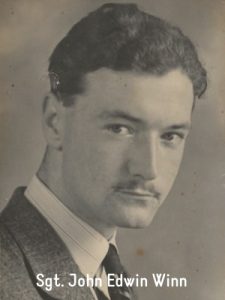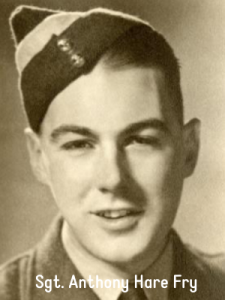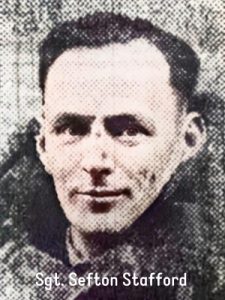Swindon’s Own Squadron
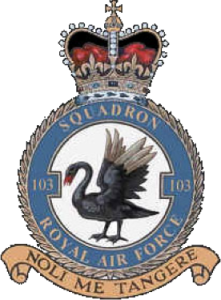 It was April 1, 1943, one minute to half past four. From Elsham Wolds airfield in Lincolnshire, England, the Avro Lancaster MKIII with the number ED 626 took off. The aircraft was new. It had been delivered three weeks earlier, on March 11, 1943, and attached to 103 Squadron, also known as ‘Swindon’s Own Squadron’, a squadron with the motto ‘Noli me tangere’ (touch me not) and a swan with flapping wings as its emblem. The aircraft was to make only three flights and fly for 35 hours. The aircraft took off alone. Pilot Squadron Leader Charles O’Donoghue went alone with the crew of seven. He had done this before. On March 20, 1943, the Lancaster had dropped bombs on the railway station at Leer near Emden. The target now was a dawn raid on the German town of Emmerich. The bombing was carried out. Donoghue returned, but at 7:22 a.m. things went wrong. Night fighter pilot Oberfeldwebel Fritz Timm was also on the move from Twente air base with his Messerschmidt Bf-110. And with the Germans’ newest weapon: the ‘Schräge Musik’, a cannon that was placed in the gunner’s cupola and could aim diagonally upwards. If the night fighter could get under a bomber, it was a hit. Timm flew forty meters below the Lancaster and fired.
It was April 1, 1943, one minute to half past four. From Elsham Wolds airfield in Lincolnshire, England, the Avro Lancaster MKIII with the number ED 626 took off. The aircraft was new. It had been delivered three weeks earlier, on March 11, 1943, and attached to 103 Squadron, also known as ‘Swindon’s Own Squadron’, a squadron with the motto ‘Noli me tangere’ (touch me not) and a swan with flapping wings as its emblem. The aircraft was to make only three flights and fly for 35 hours. The aircraft took off alone. Pilot Squadron Leader Charles O’Donoghue went alone with the crew of seven. He had done this before. On March 20, 1943, the Lancaster had dropped bombs on the railway station at Leer near Emden. The target now was a dawn raid on the German town of Emmerich. The bombing was carried out. Donoghue returned, but at 7:22 a.m. things went wrong. Night fighter pilot Oberfeldwebel Fritz Timm was also on the move from Twente air base with his Messerschmidt Bf-110. And with the Germans’ newest weapon: the ‘Schräge Musik’, a cannon that was placed in the gunner’s cupola and could aim diagonally upwards. If the night fighter could get under a bomber, it was a hit. Timm flew forty meters below the Lancaster and fired.
Just missed the church tower
The crew of the Lancaster never knew what hit their plane. 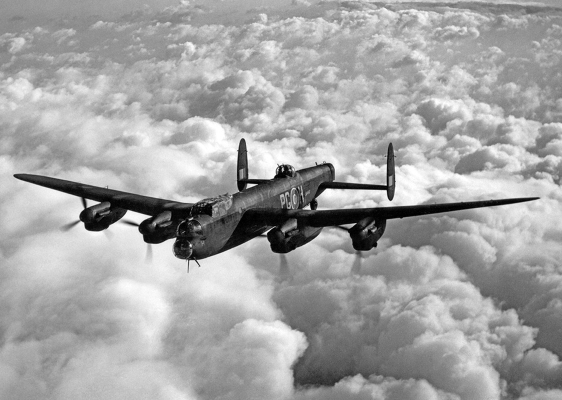 The plane caught fire, probably lost altitude so quickly that the crew could no longer bail out. In a glide it came down burning in the forest near the Hulshorster Zand. “It just missed the church tower of Elspeet”, someone remembers. If you look closely you can still see the tracks in the forest. Forest workers were quickly on the scene. The devastation was terrible. Two dead men were hanging in the trees. Another crew member was lying under the wing. They pulled two men out of the plane: unconscious or dead. The Germans were also quickly on the scene. A seriously injured passenger was still alive and was taken to the Lichtenberg hospital in Amersfoort. Sergeant Sefton Stafford died there and was buried in the Rusthof cemetery near Oud Leusden. A forest worker later said: “The Germans then took a wounded man off the plane. They treated the wounded man very carefully. My colleague and I quickly left. It stank of burnt human flesh and it made us feel sick. The fun of working that day was over and we went home. There was also a boy from Hop van Horstmeer at the plane. He took a revolver from the plane.”
The plane caught fire, probably lost altitude so quickly that the crew could no longer bail out. In a glide it came down burning in the forest near the Hulshorster Zand. “It just missed the church tower of Elspeet”, someone remembers. If you look closely you can still see the tracks in the forest. Forest workers were quickly on the scene. The devastation was terrible. Two dead men were hanging in the trees. Another crew member was lying under the wing. They pulled two men out of the plane: unconscious or dead. The Germans were also quickly on the scene. A seriously injured passenger was still alive and was taken to the Lichtenberg hospital in Amersfoort. Sergeant Sefton Stafford died there and was buried in the Rusthof cemetery near Oud Leusden. A forest worker later said: “The Germans then took a wounded man off the plane. They treated the wounded man very carefully. My colleague and I quickly left. It stank of burnt human flesh and it made us feel sick. The fun of working that day was over and we went home. There was also a boy from Hop van Horstmeer at the plane. He took a revolver from the plane.”
Seven conifers for crew
The crew of seven consisted of:
- S/L Charles O’Donoghue, 28, pilot
- Sgt. James Edward Callaghan, 20, flight engineer
- F/O Eri Richard Victor Ashcroft, 20, bomb aimer
- F/O Ian Crawford Burns, 22, air gunner
- Sgt. John Edwin Winn, 22, wireless operator/air gunner
- Sgt. Anthony Hare Fry, 22, navigator
- Sgt. Sefton Stafford, 33, air gunner
Apart from Stafford, the deceased occupants of the bomber were buried in Harderwijk. Forest owner Ir. Adriaan Ernst Jurriaanse (1877-1960) erected a simple monument, planted seven conifers and held a commemoration with the forest workers, during which he read a passage from the Bible, probably in the 1950s. There is a text: “Six dead, one wounded. British fell here on April 1, 1943. Shot down with their plane. Matthew 6: 9-14.” Later, the monument was provided with more information. It is still a place where this crash is commemorated every year. Source: among others Elspeet Historie
